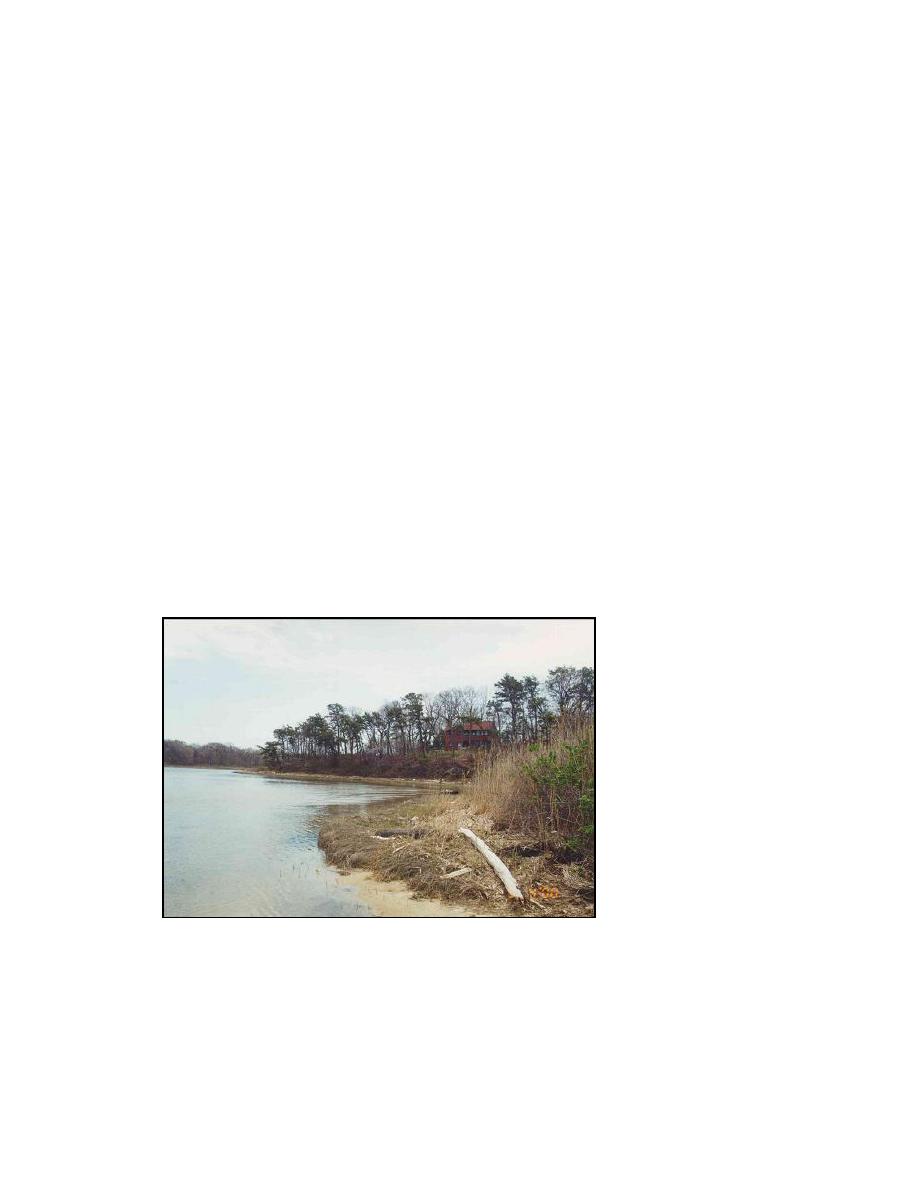
the pond's water quality. For these reasons, Goldsmith Inlet has consistently appeared on
the NYSDEC Priority Water Problem List and the Priority Waterbodies List. Closure of
Goldsmith Inlet would be expected to further reduce water quality in the pond.
Physical setting
Goldsmith Inlet is owned by Suffolk County and is located within the county's 34-
acre Goldsmith Inlet Park. The jetty at Goldsmith Inlet is owned by the Town of
Southold. The park serves the community for nature walks and fishing. The site
supports a variety of wildlife species, including deer, heron, osprey, and piping plovers.
The piping plover is an endangered species whose breeding grounds are protected by the
NYSDEC. A 1998 environmental inventory marked the area as a piping plover nesting
site. This is a factor entering scheduled inlet maintenance, because the NYSDEC will
only allow dredging from October through March. This same inventory also found that
the western side of Goldsmith Inlet contains diverse vegetative habitats including Pitch
Pine and Oak Forest, Maritime Shrubland, Maritime Grassland, Shrub Swamp, Emergent
Marsh, and Estuary and Salt Marsh.
Behind the beach, a narrow fringe of habitat that is classified as an estuary and salt
marsh containing intertidal marsh and high marsh rings the western and southwestern
edge of Goldsmith Inlet and Pond (Figure 2-25). Goldsmith Inlet Park, together with the
Peconic Dunes County Park located directly east of it, contain a system of primary and
secondary dunes not found elsewhere along the North Fork coast. Goldsmith Inlet Park
has been designated as a "critical environmental area" by the Suffolk County Department
of Health and is protected.
Figure 2-25. Goldsmith Inlet, west perimeter, view looking south,
circa winter 2001
The bluff-backed beaches and land surrounding the inlet represent the advanced
stages of a bay barrier, where the pond was once a bay and the barrier beach was formed
from the erosion of coastal glacial deposits. Approaching the inlet from the west, the
bluffs (Figure 2-26) average 40 to 60 ft in elevation and are exposed to waves during
extreme high water. The bluffs decrease in height of 20 to 40 ft with proximity to the
39
Chapter 2 Study Area and Physical Setting



 Previous Page
Previous Page
